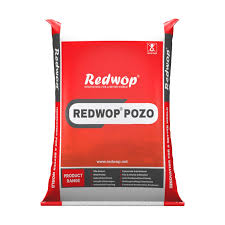
As construction practices evolve, so do the materials that define durability and finish. One of the most notable shifts in the past decade is the growing preference for tile adhesive over traditional cement-sand mortar. For architects, builders, and interior contractors, this shift is more than a trend—it’s a smarter way to tile.
For years, cement and sand mixtures were the go-to solution for tile installation. While effective to an extent, these methods often resulted in:
Uneven bonding
Cracks due to shrinkage
Incompatibility with new-age tile materials
Modern tile adhesives, on the other hand, are engineered for stronger bonding, greater flexibility, and adaptability across different surfaces. They offer a standardized way to achieve long-lasting tile work in both residential and commercial settings.
Tile adhesives bring multiple advantages to the table:
Unlike traditional mortar, tile adhesives offer a controlled mix. This ensures consistent application and better coverage—especially critical for large-format tiles or intricate patterns.
Whether it’s a concrete floor, plastered wall, or an existing tile surface, specialized adhesives can bond well without the need for excessive hacking or surface alteration.
Today’s tiling materials include vitrified tiles, mosaics, and even natural stones. Adhesives are tailored to handle the different weight and porosity characteristics of these materials.
Adhesives are easier and faster to work with. They reduce the time needed for application, minimize wastage, and improve on-site cleanliness.
Modern tile adhesive solutions are especially useful in areas where performance matters most:
Wet zones like bathrooms and kitchens benefit from water-resistant properties.
Outdoor applications require flexibility and UV resistance.
High-traffic areas need adhesives that offer strong mechanical bonding and shock absorption.
These needs are increasingly met by construction chemical manufacturers in India who design products for India’s diverse weather and surface conditions.
While selecting tile adhesive, always consider:
Tile size and type: Larger tiles or glass mosaics often require flexible, polymer-modified adhesives.
Substrate condition: Smooth, old tiles or metal may need primers before adhesive application.
Location: Adhesives for indoor dry areas differ from those needed for wet, exterior, or submerged areas.
Professionals often pair adhesives with appropriate grouts and surface waterproofing compounds to extend durability and prevent future maintenance issues.
It’s not just about adhesive—smart tiling involves an entire system:
Preparing the surface properly
Selecting the right adhesive mix
Using compatible tile grouts
Ensuring waterproofing where required
Following this holistic approach not only enhances the visual finish but also improves longevity—something that construction experts now consider non-negotiable.
Modern tile adhesive is not just a substitute for traditional mortar—it’s a complete upgrade in terms of efficiency, precision, and performance. Whether you’re building a home or leading a commercial project, understanding the role of adhesive technology can help you deliver results that stand the test of time.
For those seeking versatile and high-quality adhesive solutions, explore Redwop’s full tile adhesive range to see how innovation meets real-world construction needs.
| Categories: | Services / Other Services |
| Phone: | 9555197771 |
| Address: | 2nd Floor, Pearlplaza Complex, Nr. GT Sheth School, 150ft Ring Road, Rajkot, Gujarat (India) |
| Website: | View our site |
| Email: | redwopchemicals1into2@outlook.com |